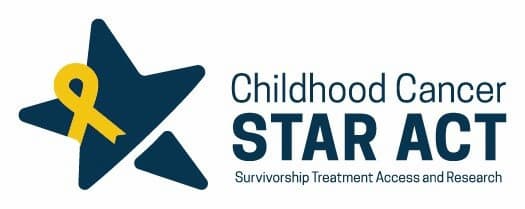Key points
CDC's Childhood Cancer STAR Project aims to allow clinics to report cancers diagnosed in children, adolescents, and young adults faster.

Improving reporting of childhood and young adult cancer
Although cancer in children is rare compared with cancers typically diagnosed in adults, cancer is still the leading cause of death from disease in this age group. About 15,000 children and adolescents younger than 20 years, and more than 21,000 young adults aged 20 to 30 years, are diagnosed with cancer each year in the United States. The good news is that cancer death rates among children from birth to age 14 have dropped nearly 70% over the past 40 years.
CDC’s Childhood Cancer STAR Project is developing a new data collection system in CDC’s National Program of Cancer Registries (NPCR). The system will enable rapid case reporting and contribute to understanding cancer and the best treatment options.
The Childhood Cancer STAR Project
The Childhood Cancer Survivorship, Treatment, Access, and Research (STAR) Act aims to advance the understanding of and care for cancer in children, adolescents, and young adults. It requires CDC to improve reporting of new cases of cancer in these age groups.

It takes about 2 years to collect and report data about a cancer diagnosis to CDC, regardless of age. The Childhood Cancer STAR Project is developing and implementing the infrastructure for facilities where childhood cancer is diagnosed to support computer systems that speed up the reporting process. More current information about cancer can improve understanding of the disease, increase enrollment in clinical trials, and connect patients and their families to helpful resources more efficiently.
What is a cancer registry?
A cancer registry collects information about people who are diagnosed with cancer and the treatments they receive. All 50 US states, the District of Columbia, Puerto Rico, the US Virgin Islands, and the US-Affiliated Pacific Islands have a cancer registry. The data they collect give health researchers and other professionals an idea of which groups of people get certain kinds of cancer, and what needs to be done to reduce cancer.
Project plans
As part of CDC's data modernization initiative, the first phase of this project focused on understanding the existing registry process and best practices for data exchange between places where cancer is diagnosed and cancer registries. In the fall of 2018, CDC developed a data collection and reporting system to build on the existing cancer registry infrastructure. The result was a secure cloud-based infrastructure called the National Oncology rapid Ascertainment Hub (NOAH), which allows laboratories to send data to central cancer registries.
The next phases include:
- Combining data collection and processing features to find and check cases automatically.
- Testing the system in a few states.
- Making sure the new system works well when used by multiple registries.
How NPCR Is Working to Get Cancer Data Faster
CDC's Sandy Jones tells the story of her son Noah's cancer diagnosis in this video. She also explains how NPCR is working to increase the speed of cancer data reporting to help children with cancer get the support they need as soon as possible.
